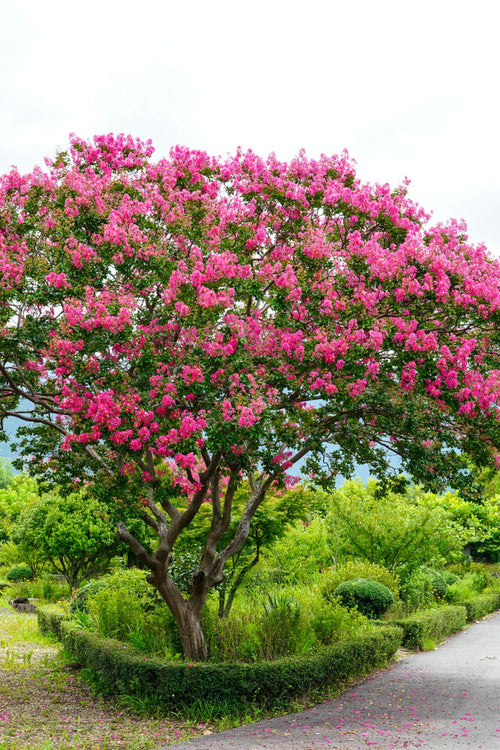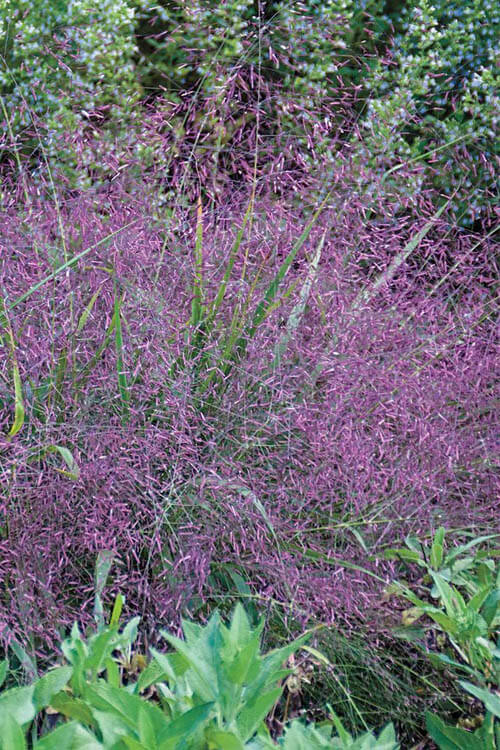Natural, Pollarded, and Standard
Crepe myrtles (Lagerstroemia spp.) are renowned for their vibrant, long-lasting summer blooms and graceful, peeling bark, making them a favorite in gardens across the United States. However, to maintain their beauty and health, proper pruning is essential. The art of crepe myrtle pruning includes various styles, each with its purpose and aesthetic appeal. This comprehensive guide will explore three primary crepe myrtle pruning styles: natural, pollarded, and standard. Additionally, we'll discuss the optimal times to prune these beloved flowering shrubs.
The Beauty of Natural Pruning
Natural pruning, also known as "crape murder," involves minimal interference with the natural growth of crepe myrtles. Those who appreciate these shrubs' wild, untamed look prefer this style. Here's how natural pruning is done:
1. Removal of Dead or Diseased Branches: Identify and remove any dead, diseased, or crossing branches. This step helps improve air circulation and reduces the risk of disease.
2. Limb Shortening: Shortening long or leggy branches to encourage a bushier appearance. Make cuts just above outward-facing buds or lateral branches to promote healthy growth.
3. Thinning the Canopy: To open up the canopy and let more light penetrate, selectively remove some branches from the shrub's center. Thinning allows for better air circulation and reduces the risk of powdery mildew.
4. Pruning Timing: Natural pruning is usually done before new growth begins, during late winter or early spring. Pruning at this time allows you to assess the shrub's structure and make cuts with a clear view of its branches. Natural pruning offers a more organic and wild appearance to crepe myrtles, allowing them to take on a natural shape and size. It is well-suited for gardeners who prefer a low-maintenance approach and wish to preserve the shrub's inherent beauty.
The Precision of Pollarded Pruning
Pollarded pruning is a more aggressive approach to shaping crepe myrtles. It involves hard, annual pruning to create a controlled, formal appearance. Here's how pollarded pruning is executed:
1. Severe Branch Removal: During the dormant season, usually in late winter, branches are cut to a uniform height, leaving only the main trunk and a few short stubs. This produces a dramatic and uniform silhouette.
2. Annual Maintenance: To maintain their shape, pollarded crepe myrtles require annual maintenance. Trim any new growth extending beyond the desired height or shape in late winter or early spring.
3. Vigorous Regrowth: After each pollarding, crepe myrtles respond with vigorous regrowth in the spring, producing a dense canopy of leaves and, eventually, a profusion of summer blooms.
4. Size Control: Pollarded pruning is ideal for creating compact, formal hedges or defining boundaries in a garden. It allows for precise control of the shrub's size and shape. While pollarded crepe myrtles can appear stark and formal during winter, they burst with foliage and blossoms in the summer, making them an eye-catching addition to formal gardens or landscapes with structured designs.
The Elegance of Standard Pruning
Standard pruning, known as "tree form" or "specimen tree" pruning, transforms crepe myrtles into small, tree-like specimens. This style combines the beauty of the crepe myrtle's bark and branching structure with the elegance of a tree. Here's how standard pruning is achieved:
1. Single Trunk Formation: Select a single, central solid trunk and remove any competing shoots or branches that emerge near the base of the shrub. This establishes the desired tree-like form.
2. Remove Lower Branches: Gradually remove the lower branches over several years to create a clear, tree-like trunk. Prune these branches back to the main trunk or a lateral branch.
3. Encourage Canopy Growth: As the central trunk develops, allow the upper branches to grow naturally, forming a canopy. Minimal pruning is required for the upper limbs to maintain their natural appearance.
4. Pruning Timing: Standard pruning is best performed in late winter or early spring when the crepe myrtle is dormant and before new growth begins. Standard-pruned crepe myrtles offer an elegant focal point in gardens and landscapes. Their tree-like appearance provides a vertical element that can be particularly appealing in smaller spaces or as an accent in mixed plantings.
The Optimal Times for Crepe Myrtle Pruning
Timing is crucial for crepe myrtle pruning, regardless of the chosen style. Here are the optimal times for pruning:
1. Late Winter to Early Spring: This is the ideal time for natural, standard, and pollarded pruning. Perform pruning while the shrub is dormant but just before new growth begins, usually in late winter or early spring.
2. Avoid Summer Pruning: Avoiding crepe myrtles in full bloom is generally recommended. Pruning during this time can reduce the number of blossoms and delay or interrupt the flowering cycle.
3. Deadheading Blooms: If you wish to remove spent blooms to encourage additional flowering, do so during the summer as the blossoms fade. This is known as "deadheading."
4. Minor Pruning Year-Round: While significant pruning is best done during the dormant season, minor maintenance, such as removing dead or diseased branches, can be performed year-round.
Crepe myrtle pruning offers various styles to suit different preferences and garden designs. Natural pruning preserves the shrub's wild beauty, pollarded pruning provides precision and formality, and standard pruning offers elegance and vertical presence. By understanding the techniques and timing associated with each style, gardeners can enhance the health and aesthetics of their crepe myrtles, ensuring they remain a captivating feature in their landscapes for years to come.



















































